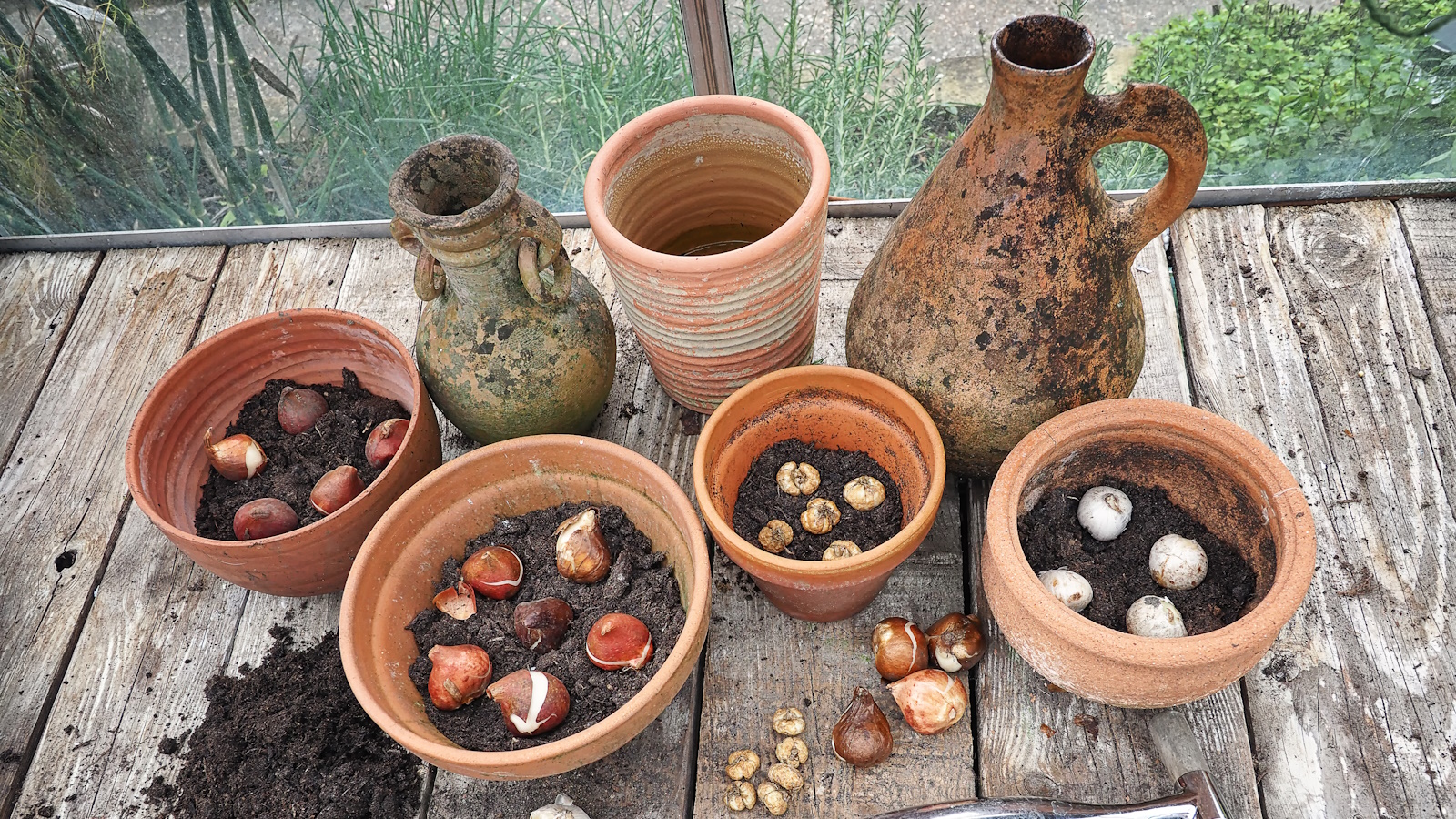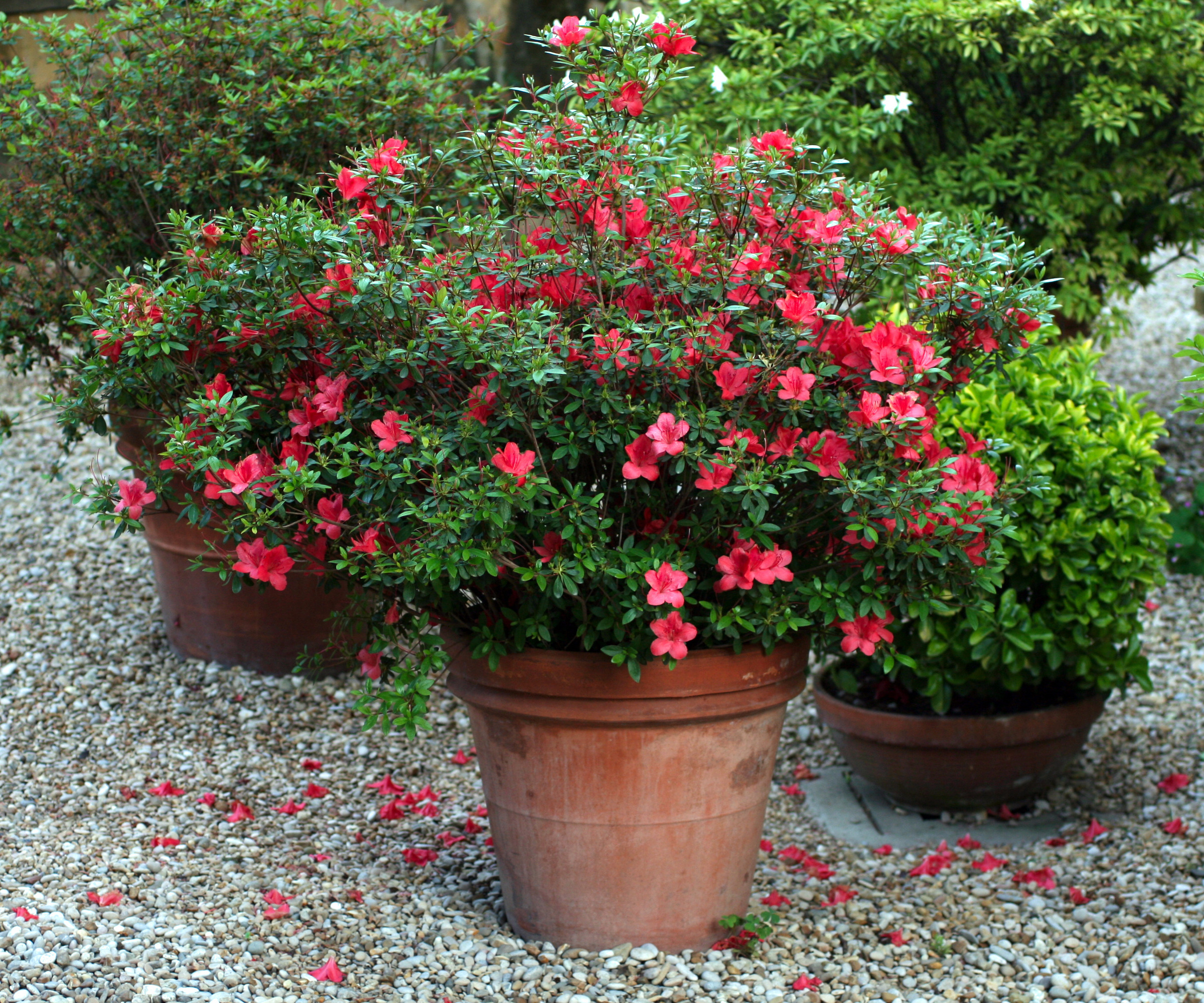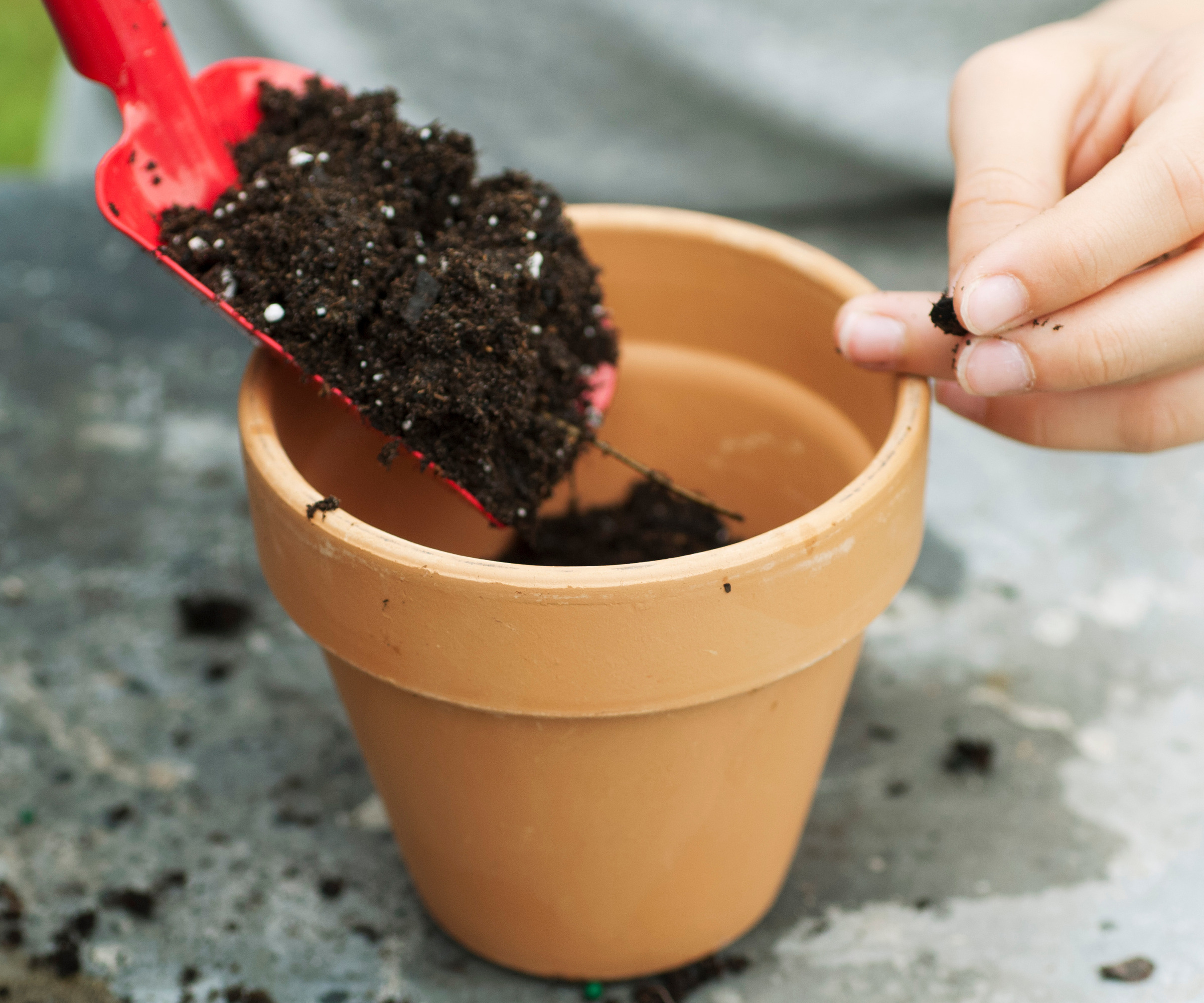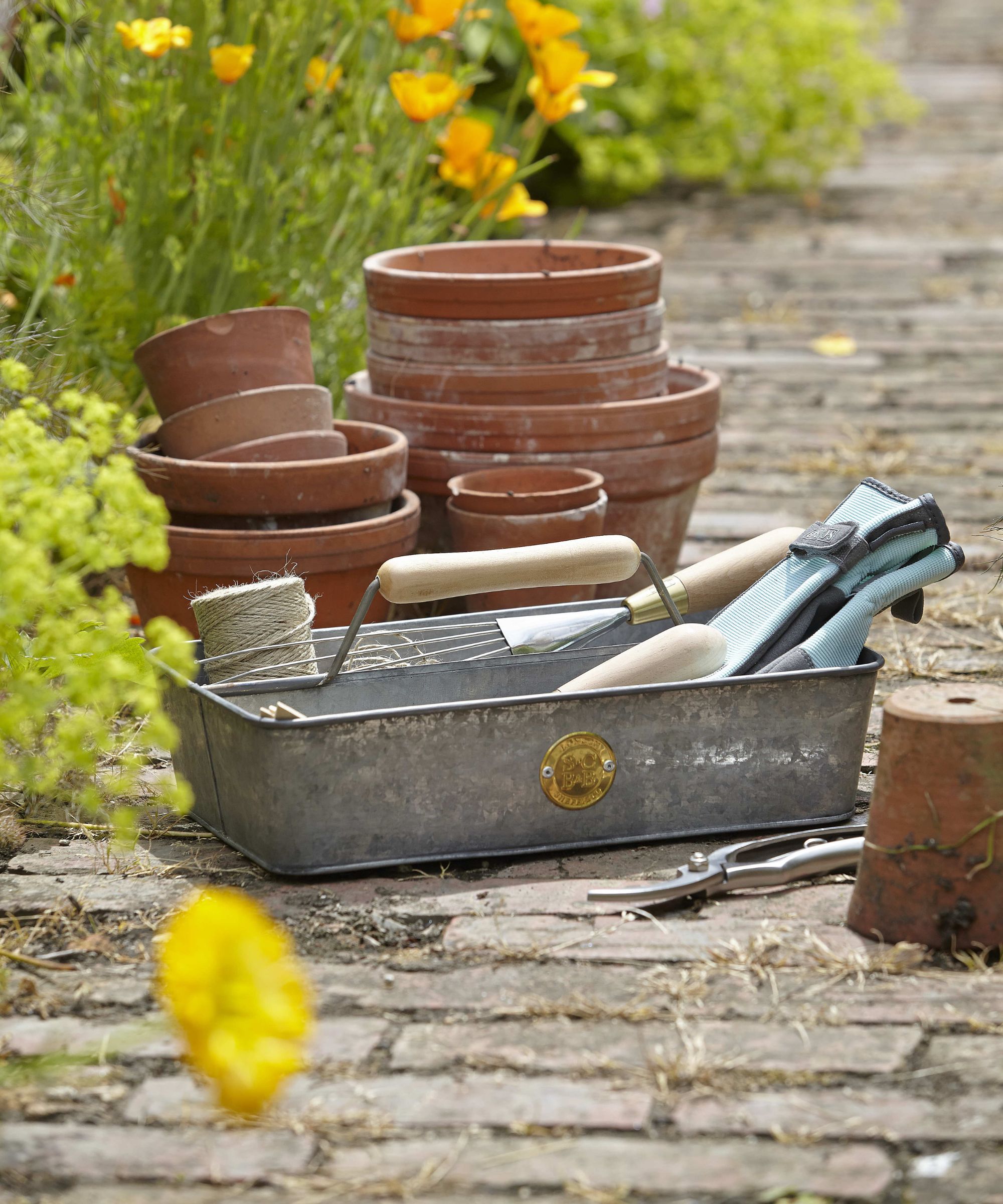How to store terracotta pots in winter – 5 expert steps for safeguarding your rustic containers
Stop your terracotta plant pots from cracking in the cold with our expert storage advice


Terracotta plant pots are well known for their orange hue and rustic appeal. Adding a subtle injection of color into any yard, they bring a style accent without straying too far from gradients of the natural world.
But just as there are certain plants to never put in terracotta pots, there are certain places where pots made from terracotta should never be stored - and outside during winter is definitely one of them.
As a porous material, terracotta pots will absorb moisture during the winter, resulting in cracking and splitting as the material weakens. To keep your terracotta planters safe, we asked gardening experts how to best store them to survive the winter. This guide will tell you exactly how to store terracotta pots in winter, so that they make an appearance again come spring.
1. Empty the pots

Before storing your terracotta plant pots away, you will need to take plants out of them. If you store your pots with the plants still in them, the plants will most likely fail to survive and the moisture from the damp soil won't mix well with the porous nature of your terracotta plant pots.
Jessica Mercer, senior content marketing coordinator and plant expert at Plant Addicts, says, 'You will need to remove the soil and plants from your terracotta plant pots before storing them so moisture cannot freeze and cause cracking.'
It's recommended to use your hands or a small trowel to help de-pot your plants from their terracotta pots. Using a small trowel around the edges of the pot can be particularly useful to dislodge soil that has stuck, making the plant easier to remove.
If you're struggling with stuck soil, investing in a special tool like the burgon & ball RHS stainless widger from Amazon will be incredibly helpful. It's designed to reach deeply into the plant pot and dislodge your plant gently from the soil.
Design expertise in your inbox – from inspiring decorating ideas and beautiful celebrity homes to practical gardening advice and shopping round-ups.
2. Clean the pots thoroughly

Once your terracotta pots are empty, it's important to give them a thorough cleaning. Even when the plant has been removed from the pot, it's more than likely that soil and residue remain. If these aren't removed they can still attract moisture or cause damage, so as a preventative measure it's best to clean terracotta pots before storage.
The same rule applies for your other terracotta pots that may not have been in use: if you're looking to store those away safely for the winter and they have been home to a plant in the past, it's worth cleaning garden pots before storing them away.
'Scrub both the interior and exterior of your terracotta plant pots with a solution of one part bleach to nine parts water,' says Jessica. 'Rinse this off well with clean water to remove any bleach residue. Cleaning the pots removes dirt, mineral deposits, and potential pests or diseases, so don't skip this step.'
Diluting regular clorox disinfecting bleach from Target and many other stores should do the trick, but don't forget to dilute it or the bleach will be too harsh on your terracotta, leading to the development of white, discolored patches.

Jessica Mercer, PhD, is the Senior Content Marketing Coordinator for Plant Addicts. As a “plant collector”, Jessica enjoys growing many different plants and learning about the best cultural practices for each. Writing for Plant Addicts is a real joy for her, as she can use her science background to research interesting plant topics. She carefully considers how to best present the information to other gardeners, with a focus on sustainability and the environment.
3. Air dry your pots completely
After your pots have been cleaned, before you store terracotta pots in winter they need to be left out to dry for several days. It isn't enough to wipe down their surfaces and then store them away: the water from washing will have part-penetrated the porous material of the terracotta, so if you store your plant pots away now, they will still be damp.
'Allow your terracotta plant pots to air dry in a warm, dry place for several days to prevent residual moisture from freezing and causing damage,' says Jessica.
If you have some space space inside your home that isn't directly next to a heater or fire, place down some newspaper and sit your terracotta pots down on it for a few days. Garages and basements can often be on the colder side, so bringing your terracotta pots into an area with guaranteed warmth is the best way to make sure they are properly prepared for the next season.
4. Wrap the pots up

Terracotta isn't a material that will survive dropping or clunking into other pots too many times (if at all), so to stay on the safe side, wrap each of your terracotta pots in a layer of bubble wrap. This extra layer of protection and insulation will also help to lock moisture away from accessing the terracotta, keeping your pots dry.
'Using newspaper, bubble wrap, or fabric to wrap each pot will help prevent chips and scratching during storage,' says Jessica. 'For extra protection, you can also place pieces of cardboard, foam, or old towels between your stacks of pots. Doing this reduces the amount of pressure on the pots from the weight of the others in the stack. Limiting your plant pot stacks to only 3 or 4 high is a good idea, too.'
This decayable green bubble wrap roll from Amazon is a great eco-friendly alternative to wrap up your terracotta pots. Combine this with the reusable 4pcs pick and pluck foam dividers also from Amazon, and your terracotta pots will be snug and safe.
5. Store in a dry, frost-free location
Finally, make sure that your terracotta pots are stored in a dry location free from moisture and frost. If your potting shed is prone to getting really cold and in need of weatherproofing, consider storing your plant pots in the basement or garage instead. The most important thing is to keep them away from moisture, because moisture will undo all of the hard work you've done so far to prep the pots for storage.
'Store pots in a dry, frost-free location,' says Jessica.' A garage, basement, shed, or any area that stays above 32°F (0°C) will suffice, so long as you avoid damp areas to reduce moisture absorption.'
If you're worried about excess moisture building up where your terracotta plant pots are stored, placing a dehumidifier in the room will make a big difference.
The TABYIK 35 oz small dehumidifier from Amazon is it's best selling mini variety. It's powerful and highly portable, so you can place it right next to where your pots are being stored. To double down on eradicating moisture, place some of the ansio dehumidifier absorbers, also from Amazon, around the space.
Exceptions to the rule
Andrew Bunting, vice president of horticulture at the Pennsylvania Horticultural Society, shared with us how a select few varieties of terracotta pots are able to withstand winter weather. So if you're keen on keeping terracotta in your yard even in the winter, perhaps consider switching to one of these alternatives.
'Italian Impruneta terracotta is an exception,' says Andrew. 'This type of terracotta is created in such a way that it can withstand periods of cold and has proven to be durable in the garden for decades and in some cases over 100 years. Glazed terracotta containers in certain parts of the country where it is not extremely cold can withstand the winter months as well.'

Andrew Bunting is Vice President of Horticulture and leads the utilization of planting and design to promote environmentally sound gardening practices at PHS. Prior to arriving at PHS, Andrew worked at the Chicago Botanic Garden, Chanticleer Garden, and the Scott Arboretum for a tenure of 27 years, and has received many commendations for his work. In 2015, Andrew published his first book, “The Plant Lover’s Guide to Magnolias.”
Terracotta pots may not be the best choice for outdoors in the winter, but terracotta indoor planters can hang around all year long. Perhaps now's the time to consider growing some of the best cold-tolerant houseplants to keep greenery in your space, as well as terracotta.

Ciéra is a writer and regional laureate with particular passions for art, design, philosophy and poetry. As well as contributing to Homes & Gardens, she's an Editorial Assistant for Design Anthology UK and a contributing writer for magazines including Livingetc, Apartment Therapy, House Beautiful and Ideal Home. Previous commendations of hers include being Highly Commended by The Royal Society of Literature and receiving a prestigious MA Magazine Journalism scholarship to City, University of London.